1 of 14
Download to read offline
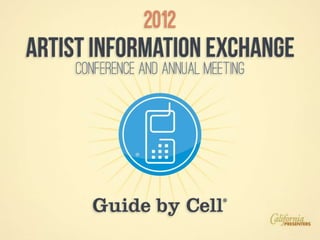
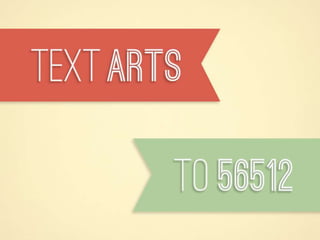
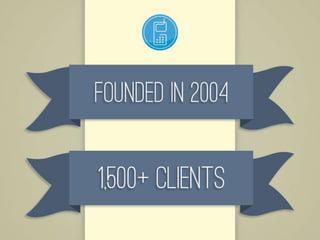
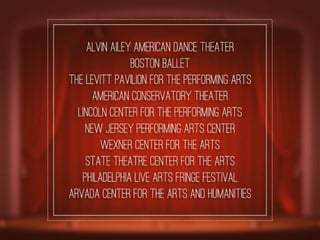
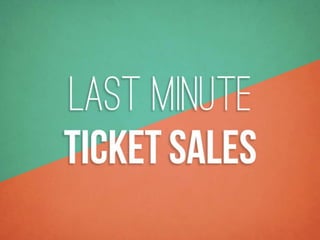
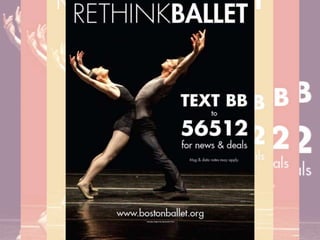

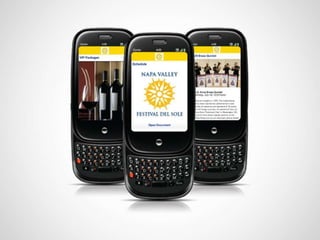
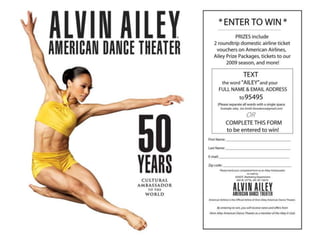
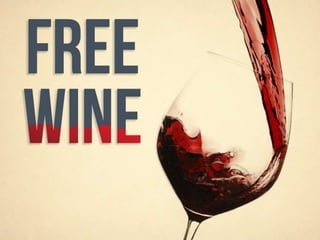
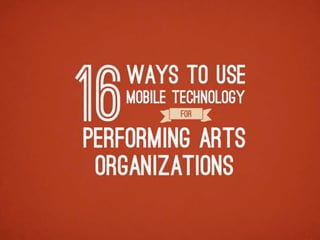



Ad
Recommended
FINAL grammar book
FINAL grammar bookEmily Jones
?
The document provides a summary of key grammatical concepts in Spanish, organized into sections covering topics such as the preterite and imperfect tenses, stem-changing verbs, the future tense, por vs para, demonstrative adjectives and pronouns, and uses of the subjunctive mood. It also includes tables of irregular verb conjugations and lists of vocabulary words and phrases to illustrate grammatical structures.P1 Intro
P1 Introdan bed
?
P1 Technology Partners is an international IT consulting, support and development company operating in commercial, government and nonprofit sectors. It has a team of over 50 developers based in the Ukraine and offers specialist solutions to complex IT assignments by designing, developing, implementing and supporting market-leading applications and technologies. P1 applies agile development practices in application development, mobile working solutions, systems integration, consulting and flexible IT support services.Grammar book2 s
Grammar book2 sForrestB
?
This document provides an overview of various Spanish grammar topics including:
- Conditional tense with irregular verbs
- Present perfect and past perfect tenses
- Subjunctive and perfect tenses
- Impersonal "se" and differences between saber and conocer
- Formal and informal commands
- Nosotros commands and placement of objects and indirect objects
- Subjunctive triggers and uses of tan and tanto
- Demonstrative pronouns and adjectivesGrammar book2 s
Grammar book2 sForrestB
?
This document provides an overview of various Spanish grammar topics including:
- Conditional tense with irregular verbs
- Present perfect and past perfect tenses
- Subjunctive and perfect tenses
- Impersonal "se" and differences between saber and conocer
- Formal and informal commands
- Nosotros commands and placement of objects and indirect objects
- Subjunctive triggers and uses of tan and tanto
- Demonstrative pronouns and adjectivesLinkedin
Linkedinmalcolmrob
?
Citigate Dewe Rogerson (CDR) is a consistently top-ranked global financial communications firm. They specialize in areas like IPOs, M&A transactions, and investor relations. CDR has a strong focus and expertise in cleantech and works with private and public cleantech companies. They have experience advising on over $500 billion in capital raises and transactions in sectors like energy, technology, biotech, and natural resources. CDR adds value through their deep sector expertise, relationships with journalists and analysts, and commitment to long-term client partnerships.¤ß¤æ¤Ã¤¡îThink #2 ¡¸HTML5¤Ç¤Ç¤¤ë! ¤¢¤ó¤Ê¤³¤È¡¢¤³¤ó¤Ê¤³¤È¡¹
¤ß¤æ¤Ã¤¡îThink #2 ¡¸HTML5¤Ç¤Ç¤¤ë! ¤¢¤ó¤Ê¤³¤È¡¢¤³¤ó¤Ê¤³¤È¡¹techtalkdwango
?
¤ß¤æ¤Ã¤¡îThink µÚ2»Ø (2011/02/17)The world of Mobile Giving
The world of Mobile Givingguidebycell
?
The document discusses mobile giving through text messaging. It describes Give by Cell as the largest provider of mobile giving solutions. It outlines three main ways to donate by phone: mobile billing, text pledges followed by a call, and completing a credit card donation online. Typical donation amounts are $5 or $10. Marketing and clear calls to action are important for successful mobile giving campaigns. Case studies show campaigns raising thousands of dollars within weeks.1 johnson
1 johnsonMary Baum
?
The document appears to be a title page for original works created by students in Ms. Johnson's class at Walker Creek Elementary school during the 2012-13 school year. It lists "Fish" as the only work.Latihan Ujian Nasional II
Latihan Ujian Nasional IILukman Izyan
?
Dokumen ini adalah latihan ujian matematika untuk kelas XII IPA yang mencakup berbagai topik termasuk logaritma, fungsi, persamaan kuadrat, dan probabilitas. Soal-soal dirancang untuk menguji pemahaman dasar siswa tentang berbagai konsep matematika. Terdapat pertanyaan tentang penyelesaian matematis dan transformasi geometris.The west end request for financing v3.0 12.08
The west end request for financing v3.0 12.08Tyler Elick
?
The West End is a fully entitled mixed-use development project in Edwards, Colorado, covering 5.3 acres and consisting of 185 residential units, retail and office spaces with a total project cost of approximately $109.1 million. The development, driven by high demand for workforce housing, includes various financing options and is supported by Eagle County's commitment to affordable housing initiatives. The project is poised to begin construction in 2009, with significant pre-sales already achieved for both workforce and market-rate housing units.Holiday plans2009
Holiday plans2009Sai Bhargav Lanka
?
This document lists several potential holiday activities including visiting a new beach in Japan, seeing the Grand Canyon's new skywalk, going to a theme park in Las Vegas, watching a tennis match in Dubai, mountain climbing, or bicycling. It ends by wishing the reader happy holidays.2 davis
2 davisMary Baum
?
The document appears to be a title page for original works created by students in Ms. Davis' class at Walker Creek Elementary school during the 2012-13 school year. It lists "Flowers" as the first work without providing any other details about the piece.About Pinterest
About Pinterest Jan Dejonghe
?
Pinterest is a visual content curation platform that allows users to organize and share images and videos from around the web. It has grown rapidly since launching in 2010, driven in large part by female users ages 25-44 interested in areas like home decor and fashion. Many brands are using Pinterest successfully to showcase their products, drive traffic to their websites, and engage with customers in a visual way. The guide provides tips on how to make the most of Pinterest through strategies like creating collaborative boards, pinning content directly from mobile apps, and integrating Pinterest sharing buttons on websites.1 johnson
1 johnsonMary Baum
?
The document appears to be a title page for original works created by students in Ms. Johnson's class at Walker Creek Elementary school during the 2012-13 school year. It lists "Fish" as the only work.4 white
4 whiteMary Baum
?
Walker Creek Elementary students in Ms. White's class created original artworks in 2012-13. The students' works were displayed under the title "Hands". The display showed the students' creative works focusing on the theme of hands. "Ecopolis - La Rete dei Comuni Molisani aderenti al Patto dei Sindaci"
"Ecopolis - La Rete dei Comuni Molisani aderenti al Patto dei Sindaci"Energency
?
Energency ¨¨ una start-up molisana che collabora con comuni per promuovere la pianificazione energetica e l'efficienza energetica attraverso il 'patto dei sindaci'. La rete 'ecopolis' mira a creare un network di comuni virtuosi in Molise per sostenere la transizione energetica e ridurre le emissioni di CO2. Tra le attivit¨¤ di Energency ci sono la sensibilizzazione, consulenze e la gestione di progetti di energia sostenibile.Train by Cell - Jumpstarting m learning
Train by Cell - Jumpstarting m learningguidebycell
?
Train by Cell provides mobile delivery solutions including mobile websites, apps, text messaging and audio to over 250 clients across various industries for uses such as sales training, onboarding, and corporate communications through a cloud-based platform that allows for easy creation, distribution and analysis of mobile content without requiring IT resources. Their solutions aim to address common organizational problems with training such as high costs and knowledge retention as well as individual issues like lack of time and easy access to training materials.Serious Play Presentation
Serious Play Presentationguidebycell
?
This document summarizes the services of a company that has been in business for 8 years providing mobile learning and engagement solutions to over 2,000 clients globally including cultural organizations, enterprises, and educational institutions. The company offers all the cloud-based technology needed to launch mobile services including text messaging, QR codes, mobile websites and apps, and audio interactions. Examples are provided of how several prominent museums have used the company's mobile services to enhance visitor education, engagement, and publicity through scavenger hunts, games, and interactive audio tours. The key benefits highlighted include being fast, inexpensive, participatory, and engaging visitors both on and off-site through their always-with-them mobile devices.Give by Cell - 2011 Nonprofit Resource Center presentation
Give by Cell - 2011 Nonprofit Resource Center presentationguidebycell
?
Mobile giving allows donors to make contributions by texting keywords to short codes linked to non-profit organizations. Popular methods include text-to-give campaigns where a $5 or $10 donation is charged to the donor's phone bill, or text-to-pledge campaigns followed by collection calls. Younger donors aged 14-35 are most likely to participate. Live events, especially those hosted by celebrities, tend to be the most successful campaigns. Organizations must meet eligibility requirements to partner with mobile giving platforms and receive donations.Give by Cell Presentation on Mobile Giving
Give by Cell Presentation on Mobile Givingguidebycell
?
Mobile technology provides new opportunities for fundraising through mobile apps, text messaging, and QR codes. There are three main components to an effective mobile strategy: marketing, education/awareness, and fundraising. Mobile fundraising options include text-to-pledge, where donors text a pledge amount without a dollar limit, and text-to-give, where donors text a keyword to a short code to make a donation through their mobile phone bill. While mobile giving is growing, it currently only accounts for about 10% of donations and traditional fundraising is still dominant. For charities, adopting mobile giving requires some setup through the Mobile Giving Foundation but has potential to reach new younger donors.Give by Cell Presentation on Mobile Giving
Give by Cell Presentation on Mobile Givingguidebycell
?
Mobile technology provides new opportunities for fundraising through mobile apps, text messaging, and QR codes. There are three main components to an effective mobile strategy: marketing, education/awareness, and fundraising. For fundraising, organizations can use text-to-pledge which allows donors to text a pledge amount without a dollar limit or requirements, or text-to-give which begins with a donor texting a keyword to a short code to make a donation of $5-10 that is billed to their phone bill. Setting up a mobile giving program requires going through the Mobile Giving Foundation and meeting certain eligibility requirements, but can help non-profits engage new donors, raise more money, and be part of an overall mobile strategyGuide by Cell Presentation of the Future of Mobile Technology
Guide by Cell Presentation of the Future of Mobile Technologyguidebycell
?
The document discusses the future of mobile technology and its applications for museums. It outlines how mobile has evolved from basic phones to smartphones with advanced capabilities. Mobiles can now be used for various functions like marketing, fundraising, interactive experiences, education and more. Examples mentioned include using texting for donations, games and information access. The future is predicted to have more augmented reality, social media integration, and voice commands. In conclusion, visitors increasingly use mobile devices at museums, so institutions should explore low-cost mobile options to engage audiences.Guide by Cell San Jose April 19
Guide by Cell San Jose April 19guidebycell
?
The document discusses the growing use of mobile technology and its potential applications for cultural institutions. It outlines Guide by Cell's experience in the mobile field and common goals for cultural sites around visitor experience, education, and fundraising. Mobile can help visitors gather information through audio tours, texting, websites/apps, and QR codes. It can also make the experience more fun through games, videos and interactive content. Visitors can share their experience on social media. Finally, mobile provides opportunities for visitors to spend money through donations, tickets and purchases. The document encourages cultural sites to experiment with these mobile options to better engage today's technology-savvy audiences.Guide by Cell Presentation on the Future of Mobile Technology
Guide by Cell Presentation on the Future of Mobile Technologyguidebycell
?
Mobile technology allows museum visitors to gather information, have fun, and share their experience. Smartphones can be used to access audio tours, play interactive games, and share content on social media. The document outlines several mobile app examples that provide information, entertainment and ways to spend money at museums. It encourages museums to experiment with one or two mobile options and notes that smartphone usage provides instant statistics on visitor engagement.Give by Cell Presentation on the Future of Mobile Giving
Give by Cell Presentation on the Future of Mobile Givingguidebycell
?
The document discusses mobile giving through text donations. It provides information on how to set up a mobile giving campaign through Give by Cell, including choosing a keyword, donation amounts of $5 or $10, and the multi-step process donors go through to make a text donation. Statistics show text donations appeal most to younger demographics. Integrating mobile giving with events, social media, websites and other platforms can help drive participation. The document also explores using pledges and live displays of pledged amounts to engage donors.Give presentation january_2011_jvdk
Give presentation january_2011_jvdkguidebycell
?
The document discusses mobile giving and text donations. It provides information on Give by Cell, the largest mobile giving provider. Donors can make donations via text message by sending a keyword to a shortcode, with $5 or $10 added to their phone bill. Text donations appeal most to younger donors and live events. The document outlines the steps to set up a text donation campaign and get approved, and provides reporting and money flow details. Several case studies demonstrate successful mobile giving campaigns.More Related Content
Viewers also liked (12)
¤ß¤æ¤Ã¤¡îThink #2 ¡¸HTML5¤Ç¤Ç¤¤ë! ¤¢¤ó¤Ê¤³¤È¡¢¤³¤ó¤Ê¤³¤È¡¹
¤ß¤æ¤Ã¤¡îThink #2 ¡¸HTML5¤Ç¤Ç¤¤ë! ¤¢¤ó¤Ê¤³¤È¡¢¤³¤ó¤Ê¤³¤È¡¹techtalkdwango
?
¤ß¤æ¤Ã¤¡îThink µÚ2»Ø (2011/02/17)The world of Mobile Giving
The world of Mobile Givingguidebycell
?
The document discusses mobile giving through text messaging. It describes Give by Cell as the largest provider of mobile giving solutions. It outlines three main ways to donate by phone: mobile billing, text pledges followed by a call, and completing a credit card donation online. Typical donation amounts are $5 or $10. Marketing and clear calls to action are important for successful mobile giving campaigns. Case studies show campaigns raising thousands of dollars within weeks.1 johnson
1 johnsonMary Baum
?
The document appears to be a title page for original works created by students in Ms. Johnson's class at Walker Creek Elementary school during the 2012-13 school year. It lists "Fish" as the only work.Latihan Ujian Nasional II
Latihan Ujian Nasional IILukman Izyan
?
Dokumen ini adalah latihan ujian matematika untuk kelas XII IPA yang mencakup berbagai topik termasuk logaritma, fungsi, persamaan kuadrat, dan probabilitas. Soal-soal dirancang untuk menguji pemahaman dasar siswa tentang berbagai konsep matematika. Terdapat pertanyaan tentang penyelesaian matematis dan transformasi geometris.The west end request for financing v3.0 12.08
The west end request for financing v3.0 12.08Tyler Elick
?
The West End is a fully entitled mixed-use development project in Edwards, Colorado, covering 5.3 acres and consisting of 185 residential units, retail and office spaces with a total project cost of approximately $109.1 million. The development, driven by high demand for workforce housing, includes various financing options and is supported by Eagle County's commitment to affordable housing initiatives. The project is poised to begin construction in 2009, with significant pre-sales already achieved for both workforce and market-rate housing units.Holiday plans2009
Holiday plans2009Sai Bhargav Lanka
?
This document lists several potential holiday activities including visiting a new beach in Japan, seeing the Grand Canyon's new skywalk, going to a theme park in Las Vegas, watching a tennis match in Dubai, mountain climbing, or bicycling. It ends by wishing the reader happy holidays.2 davis
2 davisMary Baum
?
The document appears to be a title page for original works created by students in Ms. Davis' class at Walker Creek Elementary school during the 2012-13 school year. It lists "Flowers" as the first work without providing any other details about the piece.About Pinterest
About Pinterest Jan Dejonghe
?
Pinterest is a visual content curation platform that allows users to organize and share images and videos from around the web. It has grown rapidly since launching in 2010, driven in large part by female users ages 25-44 interested in areas like home decor and fashion. Many brands are using Pinterest successfully to showcase their products, drive traffic to their websites, and engage with customers in a visual way. The guide provides tips on how to make the most of Pinterest through strategies like creating collaborative boards, pinning content directly from mobile apps, and integrating Pinterest sharing buttons on websites.1 johnson
1 johnsonMary Baum
?
The document appears to be a title page for original works created by students in Ms. Johnson's class at Walker Creek Elementary school during the 2012-13 school year. It lists "Fish" as the only work.4 white
4 whiteMary Baum
?
Walker Creek Elementary students in Ms. White's class created original artworks in 2012-13. The students' works were displayed under the title "Hands". The display showed the students' creative works focusing on the theme of hands. "Ecopolis - La Rete dei Comuni Molisani aderenti al Patto dei Sindaci"
"Ecopolis - La Rete dei Comuni Molisani aderenti al Patto dei Sindaci"Energency
?
Energency ¨¨ una start-up molisana che collabora con comuni per promuovere la pianificazione energetica e l'efficienza energetica attraverso il 'patto dei sindaci'. La rete 'ecopolis' mira a creare un network di comuni virtuosi in Molise per sostenere la transizione energetica e ridurre le emissioni di CO2. Tra le attivit¨¤ di Energency ci sono la sensibilizzazione, consulenze e la gestione di progetti di energia sostenibile.More from guidebycell (12)
Train by Cell - Jumpstarting m learning
Train by Cell - Jumpstarting m learningguidebycell
?
Train by Cell provides mobile delivery solutions including mobile websites, apps, text messaging and audio to over 250 clients across various industries for uses such as sales training, onboarding, and corporate communications through a cloud-based platform that allows for easy creation, distribution and analysis of mobile content without requiring IT resources. Their solutions aim to address common organizational problems with training such as high costs and knowledge retention as well as individual issues like lack of time and easy access to training materials.Serious Play Presentation
Serious Play Presentationguidebycell
?
This document summarizes the services of a company that has been in business for 8 years providing mobile learning and engagement solutions to over 2,000 clients globally including cultural organizations, enterprises, and educational institutions. The company offers all the cloud-based technology needed to launch mobile services including text messaging, QR codes, mobile websites and apps, and audio interactions. Examples are provided of how several prominent museums have used the company's mobile services to enhance visitor education, engagement, and publicity through scavenger hunts, games, and interactive audio tours. The key benefits highlighted include being fast, inexpensive, participatory, and engaging visitors both on and off-site through their always-with-them mobile devices.Give by Cell - 2011 Nonprofit Resource Center presentation
Give by Cell - 2011 Nonprofit Resource Center presentationguidebycell
?
Mobile giving allows donors to make contributions by texting keywords to short codes linked to non-profit organizations. Popular methods include text-to-give campaigns where a $5 or $10 donation is charged to the donor's phone bill, or text-to-pledge campaigns followed by collection calls. Younger donors aged 14-35 are most likely to participate. Live events, especially those hosted by celebrities, tend to be the most successful campaigns. Organizations must meet eligibility requirements to partner with mobile giving platforms and receive donations.Give by Cell Presentation on Mobile Giving
Give by Cell Presentation on Mobile Givingguidebycell
?
Mobile technology provides new opportunities for fundraising through mobile apps, text messaging, and QR codes. There are three main components to an effective mobile strategy: marketing, education/awareness, and fundraising. Mobile fundraising options include text-to-pledge, where donors text a pledge amount without a dollar limit, and text-to-give, where donors text a keyword to a short code to make a donation through their mobile phone bill. While mobile giving is growing, it currently only accounts for about 10% of donations and traditional fundraising is still dominant. For charities, adopting mobile giving requires some setup through the Mobile Giving Foundation but has potential to reach new younger donors.Give by Cell Presentation on Mobile Giving
Give by Cell Presentation on Mobile Givingguidebycell
?
Mobile technology provides new opportunities for fundraising through mobile apps, text messaging, and QR codes. There are three main components to an effective mobile strategy: marketing, education/awareness, and fundraising. For fundraising, organizations can use text-to-pledge which allows donors to text a pledge amount without a dollar limit or requirements, or text-to-give which begins with a donor texting a keyword to a short code to make a donation of $5-10 that is billed to their phone bill. Setting up a mobile giving program requires going through the Mobile Giving Foundation and meeting certain eligibility requirements, but can help non-profits engage new donors, raise more money, and be part of an overall mobile strategyGuide by Cell Presentation of the Future of Mobile Technology
Guide by Cell Presentation of the Future of Mobile Technologyguidebycell
?
The document discusses the future of mobile technology and its applications for museums. It outlines how mobile has evolved from basic phones to smartphones with advanced capabilities. Mobiles can now be used for various functions like marketing, fundraising, interactive experiences, education and more. Examples mentioned include using texting for donations, games and information access. The future is predicted to have more augmented reality, social media integration, and voice commands. In conclusion, visitors increasingly use mobile devices at museums, so institutions should explore low-cost mobile options to engage audiences.Guide by Cell San Jose April 19
Guide by Cell San Jose April 19guidebycell
?
The document discusses the growing use of mobile technology and its potential applications for cultural institutions. It outlines Guide by Cell's experience in the mobile field and common goals for cultural sites around visitor experience, education, and fundraising. Mobile can help visitors gather information through audio tours, texting, websites/apps, and QR codes. It can also make the experience more fun through games, videos and interactive content. Visitors can share their experience on social media. Finally, mobile provides opportunities for visitors to spend money through donations, tickets and purchases. The document encourages cultural sites to experiment with these mobile options to better engage today's technology-savvy audiences.Guide by Cell Presentation on the Future of Mobile Technology
Guide by Cell Presentation on the Future of Mobile Technologyguidebycell
?
Mobile technology allows museum visitors to gather information, have fun, and share their experience. Smartphones can be used to access audio tours, play interactive games, and share content on social media. The document outlines several mobile app examples that provide information, entertainment and ways to spend money at museums. It encourages museums to experiment with one or two mobile options and notes that smartphone usage provides instant statistics on visitor engagement.Give by Cell Presentation on the Future of Mobile Giving
Give by Cell Presentation on the Future of Mobile Givingguidebycell
?
The document discusses mobile giving through text donations. It provides information on how to set up a mobile giving campaign through Give by Cell, including choosing a keyword, donation amounts of $5 or $10, and the multi-step process donors go through to make a text donation. Statistics show text donations appeal most to younger demographics. Integrating mobile giving with events, social media, websites and other platforms can help drive participation. The document also explores using pledges and live displays of pledged amounts to engage donors.Give presentation january_2011_jvdk
Give presentation january_2011_jvdkguidebycell
?
The document discusses mobile giving and text donations. It provides information on Give by Cell, the largest mobile giving provider. Donors can make donations via text message by sending a keyword to a shortcode, with $5 or $10 added to their phone bill. Text donations appeal most to younger donors and live events. The document outlines the steps to set up a text donation campaign and get approved, and provides reporting and money flow details. Several case studies demonstrate successful mobile giving campaigns.Mobile Overview with Guide by Cell
Mobile Overview with Guide by Cellguidebycell
?
The document discusses how mobile technology can be used by museums and cultural institutions. It notes that smartphones are essentially portable computers that allow users to gather information, have fun, and share their experiences via the internet and social media. The document outlines several mobile trends, such as audio tours, games, social media integration, and purchasing options. It encourages institutions to experiment with mobile offerings and utilize analytics to learn more about visitor mobile usage.Guide By Cell Mobile Overview
Guide By Cell Mobile Overviewguidebycell
?
1. The document discusses how mobile technology can be used to gather information, have fun, share experiences, and spend money at museums. It provides many examples of audio tours, games, surveys, donations, and other engaging activities.
2. Trends in mobile use are outlined, such as increasing smartphone ownership and texting. The document advises monitoring user activity through reports to understand mobile behavior.
3. Emerging mobile technologies like augmented reality, QR codes, and location-based services are predicted to become more popular ways to interact with cultural institutions.Ad